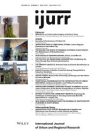Mumbai forms the décor to an interesting set of relationships among economic liberalization, globalization, class restructuring and an unprecedented housing construction boom. The much talked about new Indian middle class is primarily an urban phenomenon and seems nowhere more salient than in India’s commercial capital and largest city. This article seeks to undo some of the mysteries that surround the new middle class: how it can be empirically defined, whether and how it is growing, how class restructuring in Mumbai conforms (or not) to Western arguments about social polarization, and how any such class restructuring can best be explained. The empirical analysis employs existing data from various sources on income and consumption in Mumbai (and India at large) and reports on selected findings from a recent survey by the author on housing, class and upward mobility among households in newly constructed homes in Greater Mumbai. Data on the distribution of household incomes show that the upper‐middle income classes have grown relative to the total, that the lower‐middle income classes have shrunk, and that the ranks of the poor have expanded slightly. Survey data among new home buyers in Mumbai suggest little upward mobility. Discourse about the ‘new middle class’ tends to focus on consumption rather than income and additional findings indicate that much of the growth in consumption is credit‐based.
Details
Written by:
JAN NIJMAN
Digital Object Identifier (DOI)
10.1111/j.1468-2427.2006.00694.x
About DOI
Read full article as PDF
Read full article as HTML
See the references for this article
